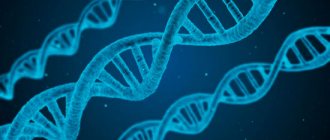You probably know the phrase “Man is a social being.” It is interesting because it very accurately and succinctly describes the dual nature of people. On the one hand, man is a biological being, the same as other animals, and differs from them only in the special organization of mental activity. On the other hand, man is the only animal that is capable of putting social values above biological needs. Let's take a closer look at what is biological in a person, what is social, and consider examples. Let's find out what the differences are between these concepts and what the relationship is between them. Let's start with the biological.
Biological in man
From the point of view of anatomy and physiology, man is the most common biological creature. Each of the systems present in our body solves certain biological problems. For example, the circulatory system provides all organs with oxygen and nutrients, and the lymphatic system ensures their cleansing.
We are completely dependent on the state of these systems, so we must constantly maintain them. We need to sleep, eat, and satisfy other physiological needs. Nevertheless, sometimes we get sick, and then the whole body begins to “fail.” But soon the immune system copes with the disease, and all systems work as usual again. All these processes are purely biological , and occur in us in exactly the same way as in most warm-blooded animals.
Interestingly, many of our systems are inferior in their capabilities to similar animal systems. Our eyesight cannot compare to that of an eagle, we cannot run as fast as a cheetah, and our stomachs cannot digest grass into nutrients the way a cow's stomach can. Nevertheless, in our overall potential we are superior to all animals, and this is ensured precisely by our social nature.
Examples of biological features
Man differs from other animals in many biological features. The most important and clearly visible signs include:
- Developed hands. Humans have very well developed hands, which allows them to be used in a variety of ways. Like other primates, they are very tenacious and quite strong. This allows you to pick up heavy objects and do rough work. But what makes a person unique is his developed fine motor skills, which allow him to also perform very delicate work.
- Upright walking. Many animals can stand on their hind legs or even walk on them. But only for humans, upright walking is the main type of movement.
- Reduced hairline. Since man has been protecting himself from the cold with clothing for many millennia, there is practically no hair left on his body. Interestingly, this trait is not unique, and many marine mammals also do not have hair.
- Developed brain. Humans have the highest encephalization coefficient (a measure of the ratio of brain mass to body mass) of all animals. In an adult of average build it is approximately 7.3-7.8. The second step in this “rating” is occupied by bottlenose dolphins (a genus of dolphins) with an encephalization coefficient of 5.4.
- Speech. The ability to speak clearly, pronouncing complex combinations of sounds, is a unique feature of humans, distinguishing them from all mammals. Interestingly, some birds are able to learn to “speak.” However, the speech of birds has a different nature - they have a well-developed ability to imitate sounds. That is, they do not utter meaningful phrases, but imitate any sounds in general (for example, parrots often imitate other domestic animals).
Personality types
Today in the specific literature there are many criteria by which personality types are determined.
The typology proposed by E. Kretschmer is now the most popular. It consists of dividing people into three groups depending on their physique.
Picnic people are people who tend to be overweight or slightly overweight, short in stature, but with a large head, wide face and short neck. Their character type corresponds to cyclothymics. They are emotional, sociable, and easily adapt to a variety of conditions.
Athletic people are tall and broad-shouldered people, with well-developed muscles, a resilient skeleton and a powerful chest. They correspond to the ixothymic type of character. These people are powerful and quite practical, calm and unimpressive. Ixothymic people are restrained in their gestures and facial expressions and do not adapt well to changes.
Asthenic people are people who are prone to thinness, their muscles are poorly developed, their chest is flat, their arms and legs are long, and they have an elongated face. Corresponds to the schizothymic character type. Such people are very serious and prone to stubbornness, and have difficulty adapting to change. Characterized by isolation.
K.G. Jung developed a different typology. It is based on the predominant functions of the psyche (thinking, intuition). His classification divides subjects into introverts and extroverts depending on the dominance of the external or internal world.
An extrovert is characterized by directness and openness. Such a person is extremely sociable, active and has many friends, comrades and just acquaintances. Extroverts love to travel and get everything out of life. An extrovert often becomes the initiator of parties; in companies, he becomes their soul. In ordinary life, he focuses only on circumstances, and not on the subjective opinion of others.
An introvert, on the contrary, is characterized by isolation and turning inward. Such a person isolates himself from the environment and carefully analyzes all events. An introvert has a hard time making contact with people, so he has few friends and acquaintances. Introverts prefer solitude to noisy companies. These people have an increased degree of anxiety.
There is also a typology based on the relationship between character and temperament, which divides people into 4 psychotypes.
A choleric person is a rather impetuous, fast, passionate and at the same time unbalanced person. Such people are subject to sudden mood swings and emotional outbursts. Cholerics do not have a balance of nervous processes, so they quickly become exhausted, thoughtlessly wasting their strength.
Phlegmatic people are distinguished by equanimity, unhurriedness, stability of moods and aspirations. Outwardly, they practically do not show emotions and feelings. Such people are quite persistent and persistent in their work, while always remaining balanced and calm. The phlegmatic person compensates for his slowness in work with diligence.
A melancholic person is a very vulnerable person, prone to stable experiences of various events. A melancholic person reacts sharply to any external factors or manifestations. Such people are very impressionable.
A sanguine person is a mobile, active person with a lively character. He is subject to frequent changes of impressions and is characterized by rapid reactions to any events. We can easily relate to the failures or troubles that befell him. When a sanguine person is interested in his work, he will be quite productive.
Also, K. Leonhard identified 12 types, often found in people with neuroses, accentuated characters. And E. Fromm described three social types of characters.
Social in man
Man is the only representative of the animal world who does not adapt to the environment, but adapts it to himself. It is worth noting that human influence on nature can be both destructive and creative. With his actions, he can disrupt its natural harmony, or he can ennoble the world around him, turning gloomy swamps into blooming gardens.
Moreover, almost any human activity is inextricably linked with society. It is only in our interaction with other members of our species and with the environment that we become human, for only then are we truly different from other animals. Our social essence manifests itself through communication, conscious work, the ability to compromise and the desire to be creative by creating something for others.
Examples of Social Features
As a person grows up, his socialization occurs - he acquires the qualities necessary for life in society. Obviously, this process requires constant interaction with other people, and socialization is impossible outside of society. Immersing himself in public life, communicating with other people, he gains intelligence, builds his vision of the world, forms ideas about morality and ethics, and finds a balance between personal freedom and responsibility.
Basic social characteristics of a person:
- Consciousness. Our consciousness is a reflection of the external world in our thoughts, reactions, feelings and experiences.
- Speech. Oral and written communication are the main ways of exchanging information between people.
- Thinking. The ability not only to perceive, but also to intelligently analyze current events, draw certain conclusions and choose rational decisions is also determined by the social nature of a person.
- Work. The main impetus for the development of human society and all civilization was the emergence of organized labor using all kinds of tools.
- Culture. The presence of culture is the main difference between humans and animals (culture usually means everything that is created by man and not by nature).
- Creation. One of the most important differences between humans and animals is also the desire to create something fundamentally new and unique not just like that, but to be appreciated by other people.
Concepts of biological and social
There are two completely opposite approaches: biologizing and sociologizing. Moreover, each of these concepts has a fairly large number of supporters, as well as arguments in its favor.
- The biologization approach focuses on the fact that most social and psychological characteristics of humans have one or another evolutionary explanation. That is, any complex and highly organized social activity is actually explained by some kind of evolutionary mechanisms. For example, if a person wants to create something that other people will appreciate and praise, this is explained by the fact that many thousands of years ago such behavior increased the person’s authority in his tribe and provided him with more opportunities to safely leave offspring.
- The sociologizing approach is based on the fact that it is social factors that are the root cause of the formation of personality. That is, all our aspirations are not consequences of biological instincts, but are formed in the process of socialization. At the same time, biological factors, of course, influence human behavior, but not in a fundamental way.
How are they interconnected?
The question of the relationship, proportion and priority of biological and social foundations in the structure of the human personality is open and controversial. To some extent, the issues go beyond psychology and affect biology and philosophy.
In psychology, there are various approaches and concepts that explain the relationship between natural and social principles or prove the dominance of one of them.
Representatives of biologization concepts believe that the uniqueness of an individual is determined primarily by natural factors, such as temperament, inclinations, etc. The disadvantage of this approach is the inability to reasonably explain the origin of a person’s creative potential.
The sociologizing direction, on the contrary, does not take into account the biological side of the individual and extols the importance of social factors. According to representatives of the movement, the source of the formation of a person’s personality is external conditions
They justify their beliefs with the following examples: a child adopts the manners of other people, masters social roles, and people belonging to different cultures differ in behavior and adherence to their own traditions. The sociologizing orientation has weaknesses: for example, it cannot reveal the mechanism of formation of different individuals in the same social conditions.
Two-factor theories of determination of personality development, convincing of its biosocial nature, became a kind of compromise. For example, a widespread idea has become the distinction between two personality substructures, formed under the influence of biological and social factors, respectively. In particular, there is an opinion that personality is divided into two components:
- “Endopsyche” - based on the natural principle, correlates with the neuropsychic mechanism of a person, covers memory, thinking, characteristics of receptivity, etc.
- “Exopsyche” - develops under the influence of social factors, focuses on the interaction of a person with the external environment, includes interests, knowledge, skills, inclinations, ideals.
Among two-factor theories, the theory of convergence of two factors and the theory of confrontation of two factors are most widespread. V. Stern, who developed the first of them, believed that personality is the child of both society and heredity. Its development is the result of a combination of natural data and external conditions. The theory of confrontation of two factors, presented in the works of S. Freud, C. Jung, E. Fromm, is based on the position of the opposition of biological and social principles in the structure of personality.
The relationship and relationship between heredity and the external environment are also considered:
Interaction theory. The impact of natural and social factors is determined by their mutual influence.
A theory of shared contribution. Personal development is a consequence of the mutual influence of biological prerequisites and the external environment
At the same time, determining the degree of importance of the contribution of each factor is considered inappropriate.
A number of approaches are based on the recognition of the biopsychosocial nature of personality, adding a mental component to its structure.
However, in general, the biological characteristics of a person, the inherent genetic characteristics of the anatomical and physiological structure, affect his individual psychological properties. But the biological component in a person’s personality is transformed into a social one. Natural elements in the personality structure are contained as socially determined components. Biological and social components remain intact and cannot be separated into separate substructures of the personality.
Unity of biological and social
The biological in man is not separated from the social. It defines a certain set of basic natural properties dictated by nature. At the same time, in the process of socialization, a person forms his own social component, which does not replace the biological one, but complements it. His social and cultural world is built on the biological foundation of genetic prerequisites, as a result of which a unique personality is formed with his own worldview, values, principles, views and ideas.
The biological and social in a person are in continuous interaction, and this interaction can never be considered complete. The biological functions of the body are influenced by social factors to a much greater extent than in other animals. And yet, a person cannot always control his biological needs with the help of his mind. Moreover, often he does not even realize that now nature is taking over, and the next decision, in fact, is made not by him, but by his animal essence.
Classification of natural human properties according to B. G. Ananyev
B. G. Ananyev developed the most complete classification of human natural qualities.
1. The initial level at which individual properties appear. Age-sex properties:
- age-related properties that consistently develop during the formation of an individual;
- sexual dimorphism, which is the fundamental division of human organic qualities into two fundamentally different phases: female and male.
Definition 2
Sexual dimorphism is commonly understood as physical differences between the sexes that are biologically determined.
Of particular interest in the psychology of sexual differences is the study of sexual dimorphism and its manifestations in different spheres of behavior. A person’s biological sex is a prerequisite for the formation of an individual’s psychological sex, but does not determine it with precision. One of the manifestations of a person’s socialization is the formation of his gender identity.
There are various individual-typical qualities of an individual:
- constitutional feature, which includes the biochemical individuality of a person and his physique;
- neurodynamic qualities of the brain, as well as the functional structure of brain activity.
2. At the second stage of individual properties, the interaction of primary level qualities, the dynamics of psychophysiological functions, and the structuring of organic needs occurs.
3. The third level involves the integration of a person’s individual qualities, which include inclinations and temperament.
The main form of development of these properties is ontogenetic evolution, which occurred according to a specific phylogenetic program, and is constantly changing under the influence of the social history of mankind. During the unfolding of the ontogenetic stages themselves, the factor of individual variability increases. This is due to the active influence of a person’s social qualities on the structural and dynamic characteristics of a person, which are their genetic sources.
Temperament is one of the main individual characteristics.
Definition 3
Temperament is a series of dynamic characteristics of mental activity.
There are three areas in which temperament manifests itself:
- general activity, which reflects aspects of the intensity and volume of interaction of the individual with the environment (physical or social). This sphere determines the following human qualities: inertia, passivity, calmness, initiative, activity, swiftness, etc.;
- features of the motor sphere, which are partial expressions of general activity. These are tempo, rhythm, speed and total number of movements;
- emotionality, which includes sensitivity, impressionability and impulsiveness.
Note 1
Galen and Hippocrates are the founders of the doctrine of temperament. The humoral theory of temperament was created by them. Hippocrates believed that in a certain group of people bile predominates, in others - blood, in others - mucus, in others - black bile.
Four types of temperament were designated by Galen. They are still accepted by the main species today. This is a choleric person who tends to be stormy, impetuous, hot and harsh. A sanguine person who is lively, active, emotional and responsive. Phlegmatic, having a calm, slow, and stable disposition. And a melancholic person, who tends to feel sad, is in a depressed, timid and indecisive mood.










